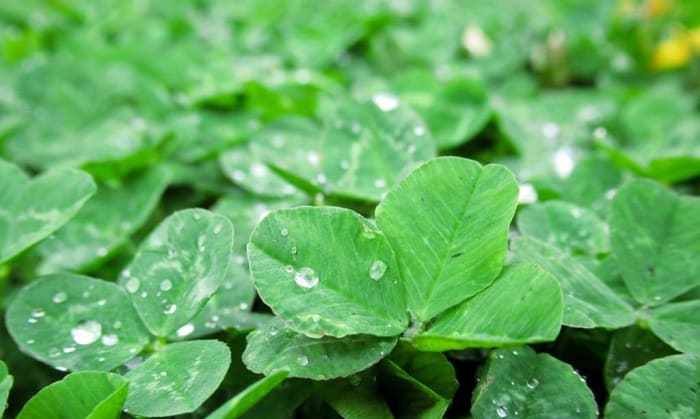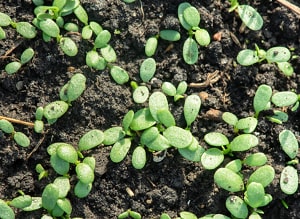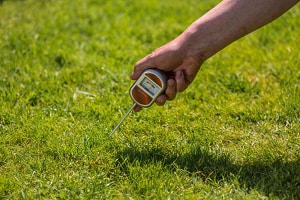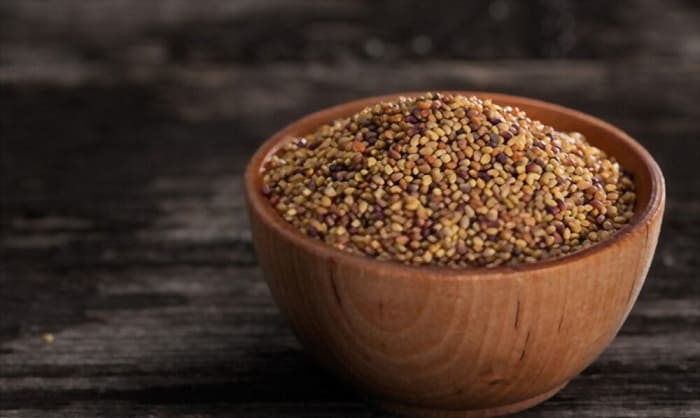Clover provides many benefits to gardens. Not only does it increase nitrogen in the soil, but it also improves moisture retention.
And whether you’re growing this herb for practical purposes or just because of its appearance, knowing when to plant clover is necessary. Generally, you should do this task during spring, summer, and fall, when there’s no frost. Read below for more details.
Table of Contents
Best Time to Plant Clover
1. In spring, late summer, and fall
- As stated above, the clover growing season begins after the last frost date in spring, which is usually mid-April or mid-May.
However, if you miss this period, you may also sow clover seed in late summer, which means July gardening is possible.
And because this herb can develop as long as there’s no frost, fall clover planting is feasible. In this case, give the plant six weeks to develop before the frost comes, but ideally, fourteen weeks before winter would give the best results.
- With these facts in mind, it’s essential that you look up the first and last frost days of your city or county on almanac.com.
In the meantime, below are general ice date estimates for each USDA hardiness zone.
| Zone | Examples of places in each zone | First frost | Last frost |
| 1 | North Slope and Fort Yukon in Alaska | May 22 – June 4 | August 25 – August 31 |
| 2 | Northwest Arctic, Yukon-Koyukuk, and Bettles in Alaska | mid-May to May 22 | First week of September |
| 3 | Warren, Hallock, and Walker in Minnesota | Within the first half of May | September 8 – September 15 |
| 4 | Manning, Bowman, Carson, and most places in North Dakota | April 24 – May 12 | September 21 – October 7 |
| 5 | Harlan, Fort Dodge, Ames, and most places in Iowa | From April 7 to the end of the same month | October 13 – 21 |
| 6 | Cumberland, Allegany, and Washington in Maryland | April 1 – April 21 | October 17 to end of October |
| 7 | Roanoke, Lynohburg, and Woodbridge in Virginia | March 22 – April 3 | October 29 to November 15 |
| 8 | College Park, Athens, and Macon in Georgia | March 13 – March 28 | November 7 – November 28 |
| 9 | Zavala, Frio, and La Salle in Texas | February 6 – end of February | November 25 to December 13 |
| 10-13 | Santa Barbara, Los Angeles, and San Diego in Southern California | Not applicable | Not applicable |
2. When the temperature’s right
Clover planting dates are also influenced by the ambient temperature. For example, the Balansa, Dixie, and Barduro varieties have the best condition to germinate when the environment’s 51.6℉ to 63℉ (10.9 to 17.2℃).
In general, 40℉ is the minimum temperature for growing all clover varieties, and if the soil and air are warm enough (>59℉), sprouting will happen within a week.
As you might have guessed, based on the information on frost dates, this plant cannot tolerate extreme cold. Specifically, the lower limit for clover is -35℉.
3. When the soil has the right pH
Generally, clover needs a pH of 6 to 7. To be careful, look up the variety you’re planning to grow.
For instance, the Ball variety needs a pH of 6.5 to 8.5, while the Persian type thrives best with an alkalinity/acidity range of 6.0 to 8.0.
How to Plant Clover Seeds?
- Before sowing clover seeds, it’s vital to test the soil and adjust its pH when necessary.
To do so, buy a testing kit and follow manufacturer instructions. Usually, the product will help determine not only pH but also nitrogen, phosphorus, and potash levels.
If your land is not alkaline or acidic enough, use lime or sulfur to get it to the right state.
- If there’s grass on the ground, remove it with a lawn mower.
- At this point, you can start putting clover seeds on the soil. Do this by hand or use a spreader, and follow the ratio of 2 ounces of seeds per 1,000 square feet.
Follow the spacing recommendations for your plant variety as well. For example, red clover usually needs 6 to 18 inches between rows.
- Once the seeds are distributed evenly, it’s necessary to rake them into the ground at a depth of ¼ inch. If you go deeper, clover germination time may never come.
- The soil should be moist but not oversaturated. Hence, water the ground every day for the first 10 days and twice a week afterwards (2 inches of moisture per week).
- Trim the clover occasionally to encourage growth, but don’t cut it shorter than 3 inches.
Notes
- Clover is a nice alternative to grass because it’s low-maintenance. It doesn’t require fertilizers, and once this herb’s established, you don’t need to give clover much moisture, even in the summer.
- If you plant clover for deer, it’s best to grow red and white varieties. Such types are the most attractive to these hoofed mammals, increasing your chance of being able to photograph and observe them.
Do not use any pesticides or herbicides while planting clover as well.
Conclusion
When to plant clover? We hope this article has given you a detailed answer. As long as you avoid the frost dates, have the correct soil pH, and grow this herb under the right temperature, you can look forward to a green garden full of clover leaves.
If you are looking for the best time to sow seeds and plant flowers. Don’t forget to learn more about these articles:
If you found the content here helpful, feel free to share it with your fellow gardeners and neighbors. Thank you for reading.

Hi, I am William – Floridayards’ digital content creator. My job is to find answers to all your concerns with thorough research and our team’s expert advice. I will also bring you honest reviews on the best products and equipment for raising your beautiful garden. Please look forward to our work!














